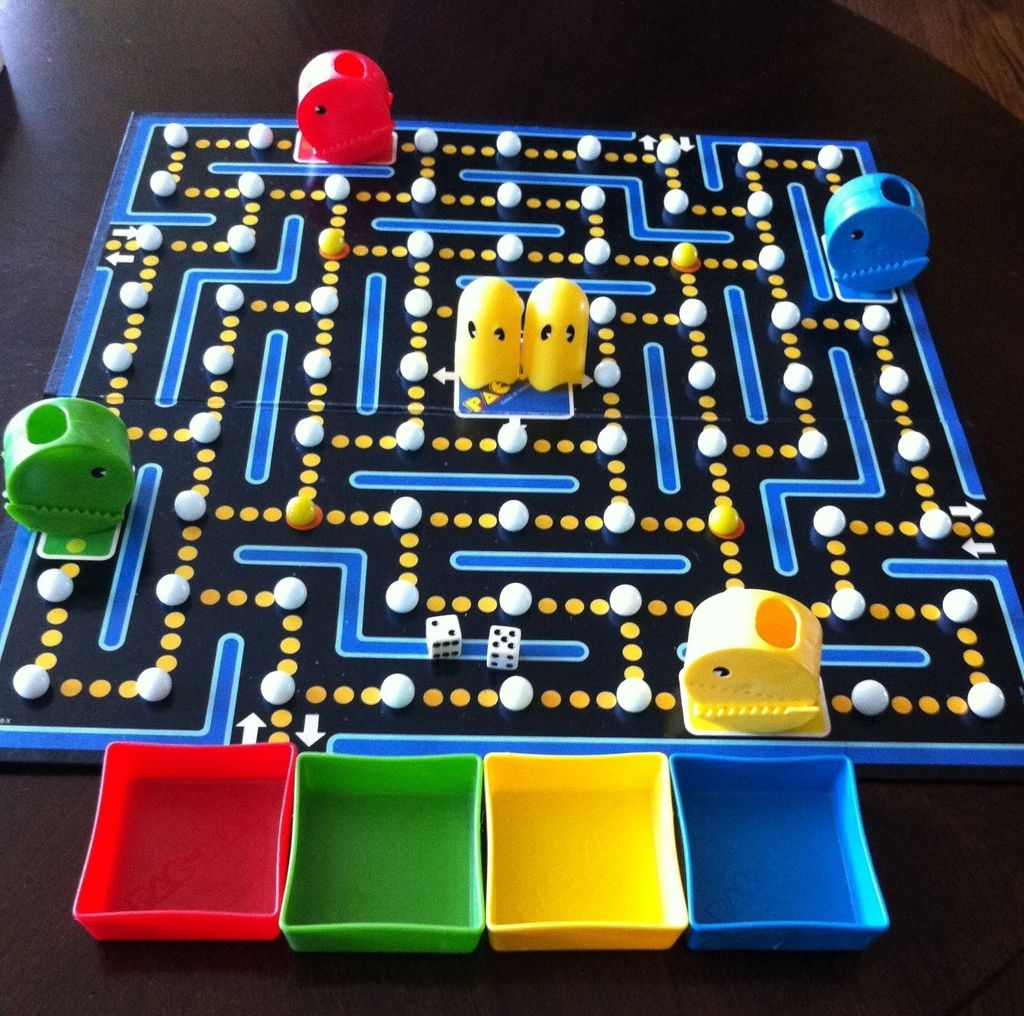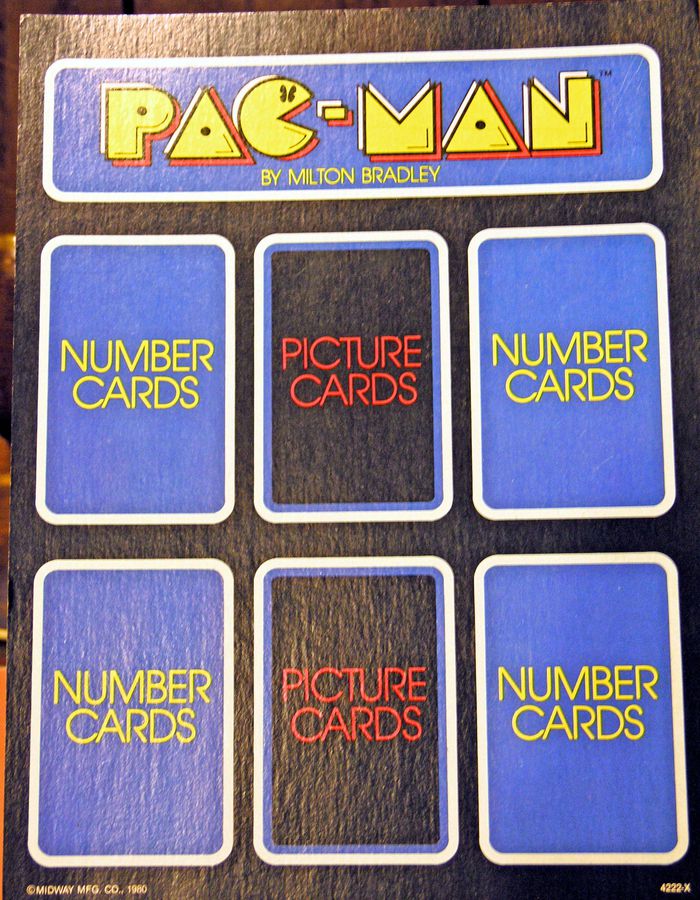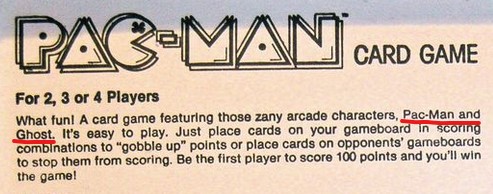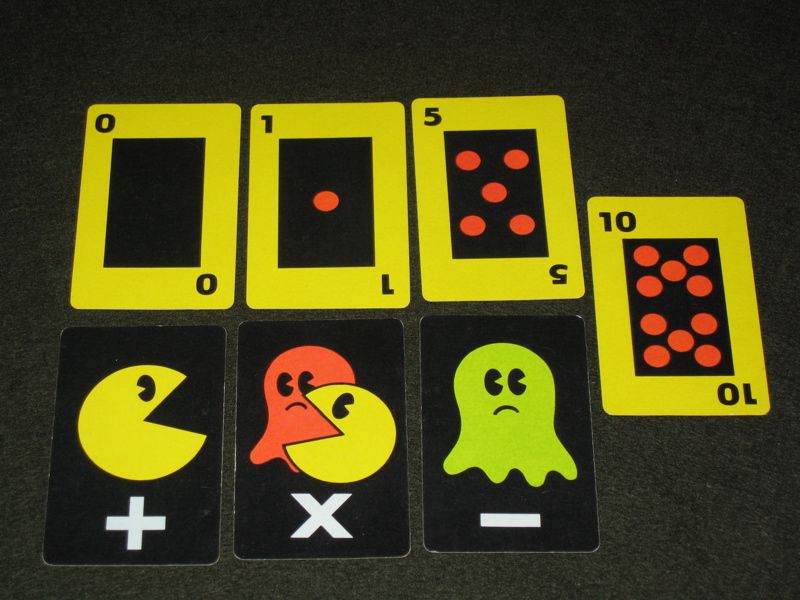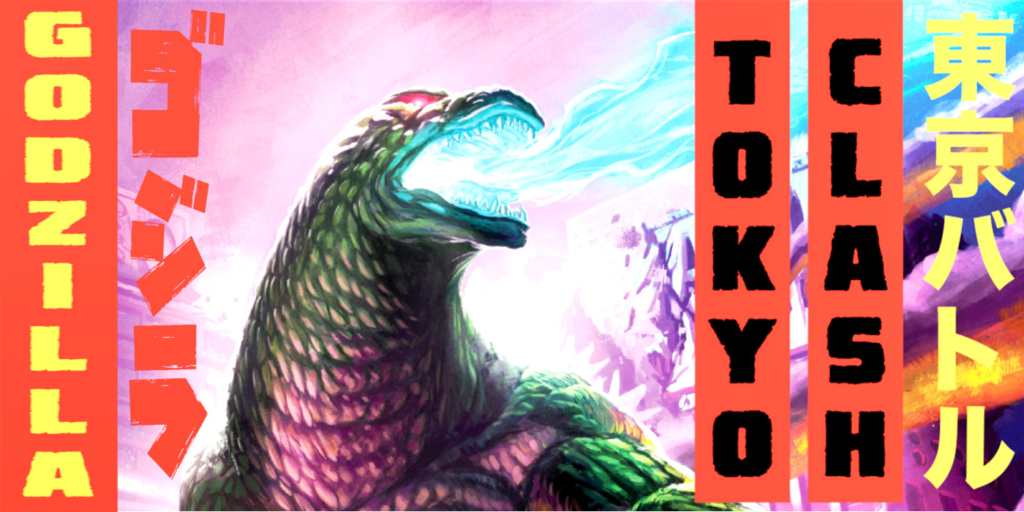Board Games Retro: Pac-Man Packs Math Past Matt’s Past Mad Pass at Pac-Man
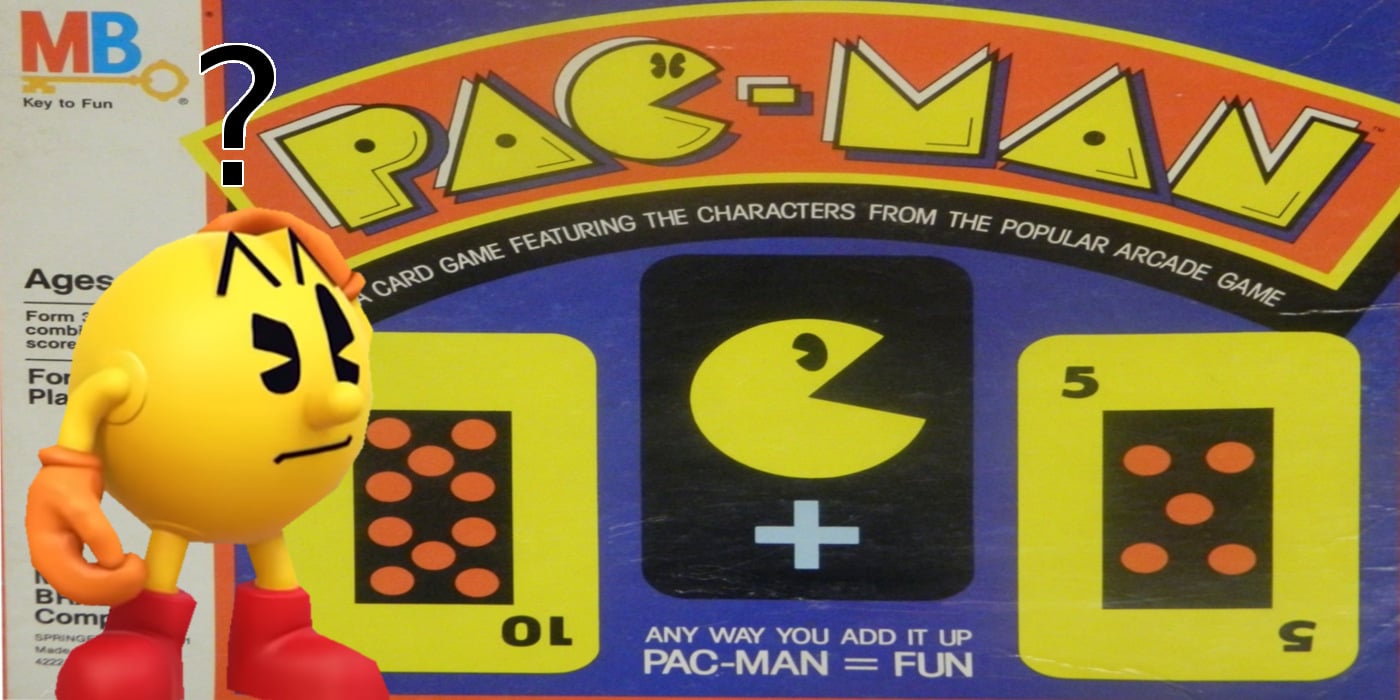
I shouldn’t have been so rude to Pac-Man. His board game is mediocre, but his card game teaches valuable math lessons! Does the title make sense now?
In the beforetime; in the long, long ago, I reviewed the Pac-Man board game. Spoilers: it’s not great.
Like most video game tie-in board games of the early 80’s (not as niche of a category as it sounds), it’s all theme, no substance. The gameplay is just doing its best to mimic the source material and also somehow make it multiplayer, even though it doesn’t translate at all.
However, 2 years prior to the release of the board game, Milton Bradley released the Pac-Man Card Game!
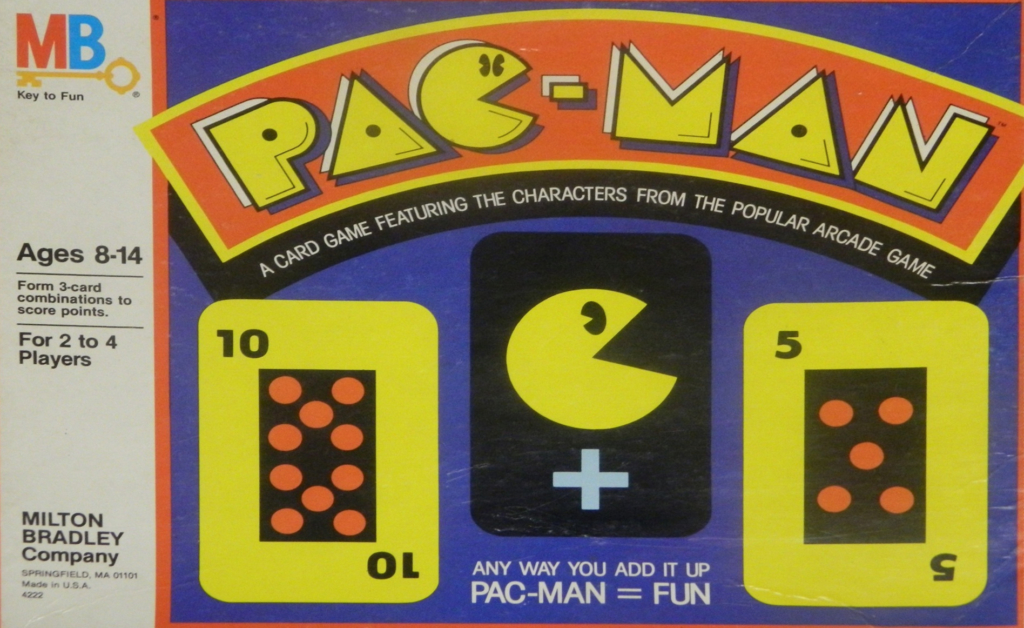 Which would be weird since they released the board game as well, but by now you know how our buddy Milt do.
Which would be weird since they released the board game as well, but by now you know how our buddy Milt do.
In the Pac-Mac Card Game, players are competing to be the first to score 100 points. Points are earned by completing sets of 2 number cards and a picture card on their player board.
The Number cards will show a number of pellets of 0, 1, 5 and 10 while the Picture cards will show either Pac-Man, Ghost or both of them together. Also, it should be noted that the designers of this game seem to believe the ghosts which chase you are actually just one singular entity whose name is Ghost. As evidenced by the opening line of the rules!
During each players’ turn, they play 1 of their cards from their hand of 3. They play Number cards in the designated spaces, and Picture cards in theirs. What’s actually pretty neat here is that you can play a card on any player’s board.
Once any player’s board has a row of 3 completely filled (as in, both Numbers and the Character in the middle), that row is scored.
The row reads like a math equation, with the Picture cards acting as the operator.
Once scored, the cards are removed and discarded. The first player to reach 100 points wins!
What’s really great about this is, obviously, the math teaching aspects. Beyond just putting down the biggest cards for yourself and adding them up to score points, you have to also understand (as a 7 year old or whatever, idk) that putting a Subtract or a 0 card on someone else’s board can really slow them down. It does a surprisingly nice job of utilizing these arithmetic concepts into a game that any 80’s kid would have been stoked to play.
Also, there’s no rule against just playing 10 x 10 to insta-win, so being able to recognize that and intercept it before it happens can be really important. Which can teach general game sense and awareness, which are harder to learn than you’d expect, at that age. I get really hyped over well designed educational games!
Overall, a nice little educational game brought to you by Milton Bradley!
Thanks for reading!

